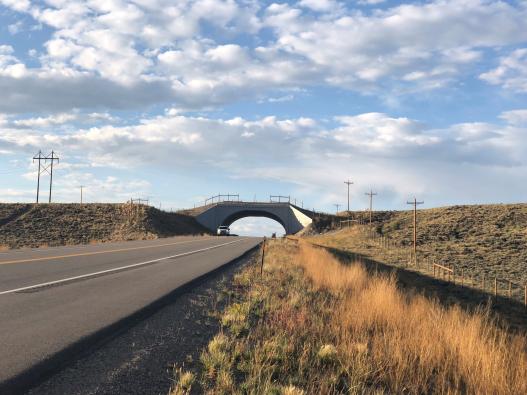August 2023 Edition | Volume 77, Issue 8
Published since 1946
Attention to Wildlife Corridors and Connectivity Growing in the Western United States
Wildlife-vehicle collisions (WVCs), reduced ecological connectivity, and associated impacts to wildlife and humans are widespread problems across road networks throughout the western United States. A new study from the Center for Large Landscape Conservation entitled “West-Wide Study to Identify Important Highway Locations for Wildlife Crossings” is an addition to a growing body of information about the importance of wildlife crossings and the need for avoiding or mitigating the effects of road infrastructure on wildlife movements. It is one of the first to look at all western states with a consistent methodological approach and to incorporate collision risk, economic cost, and connectivity considerations to identify the sections of highway across the West that are best served by future wildlife crossings.

State natural resource agencies are challenged with significant data gaps for many species, particularly non-large bodied animals, and limited funding. There are limitations in the availability of spatial data to use in evaluating species movement and connectivity. Information concerning distribution and abundance of many species are lacking as are the life history data that articulate habitat needs during critical times of the year, such as reproduction or wintering areas. This is especially true for Species of Greatest Conservation Need (SGCN). Movement data, useful in identifying important corridors that contribute to connectivity, is lacking for most species. Spatial data gaps also exist for many species. In addition, there is growing concern about the cumulative impacts of the major stressors on fish and wildlife populations, including restrictions on the species’ ability to move around the landscape, climate change, habitat alteration, and other stressors.
Recent federal legislation has provided some funding for these efforts. The federal Bipartisan Infrastructure Law (BIL), enacted as the Infrastructure Investment and Jobs Act (IIJA) of 2021 (Pub. L. 117-58, November 15, 2021) authorized $350 million total in Federal-aid contract authority funding for Federal Fiscal Years (FY) 2022 through 2026 to be awarded by the U.S. Department of Transportation, through the Federal Highway Administration, for the Wildlife Crossings Pilot Program (WCPP). The WCPP is authorized under Section 11123(b) of BIL and codified at 23 U.S.C. 171. The WCPP in the BIL is a competitive grant program with the goal of reducing WVCs while improving habitat connectivity for terrestrial and aquatic species.
The BIL also establishes the National Culvert Removal, Replacement, and Restoration Grant program (Culvert AOP Program) to provide funding for projects that would meaningfully improve or restore passage for anadromous fish (anadromous fish species are born in freshwater such as streams and rivers, spend most of their lives in the marine environment, and migrate back to freshwater to spawn). The appropriation is $200 million per year for FY 2022-2026. The Secretary of Transportation, in consultation with the Undersecretary of Commerce for Oceans and Atmosphere, will annually award funding through a competitive grant program. [§ 21203(a); 49 U.S.C. 6703(b)]. In addition, the National Oceanic and Atmospheric Administration received $65 million in funding for fish passage through the removal of in-stream barriers in FY2022 under the BIL, with a portion earmarked for tribal projects.
Improved awareness, improved analytical approaches such as the newly released wildlife crossings report, and increased funding are critical to resolving these complex issues.